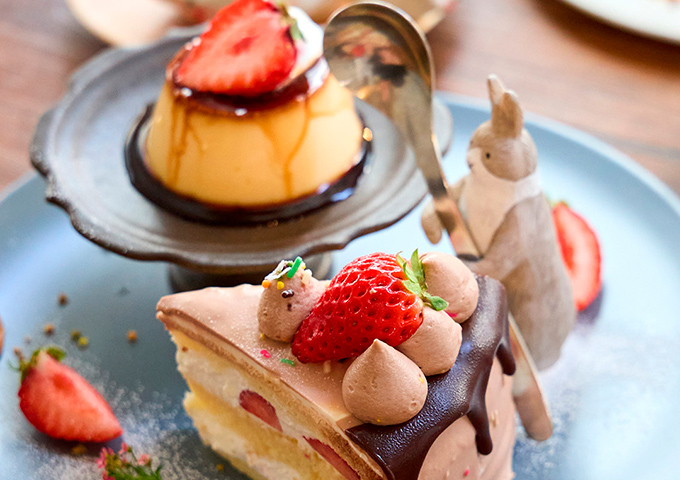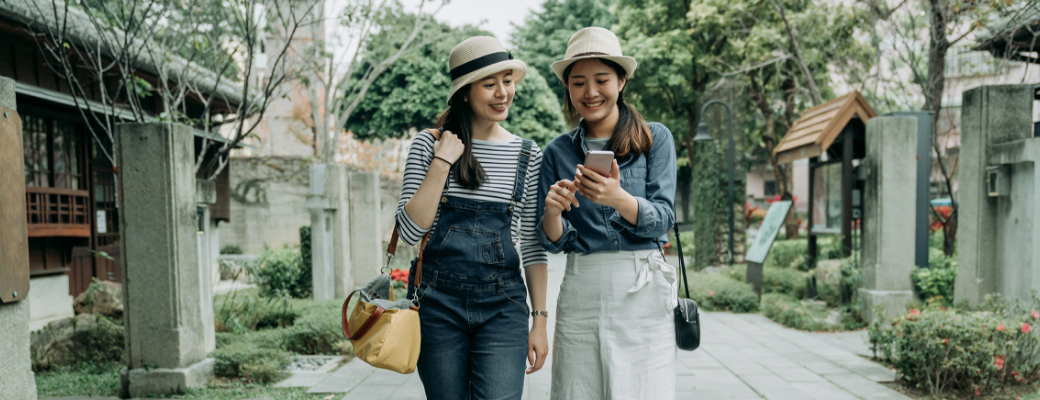
Food and Drinks
Take a relaxing break with cute sweets along the Nankai Line.

Temple of Flowers: Kanshinji Temple
Kanshinji Temple is a nationally renowned temple located in Minami Kawachi, known for its association with the hero Kusunoki Masashige. The temple boasts a wealth of treasures, including the famous "Hokuto no Shio" (Salt of the Big Dipper). In this article, we will introduce an overview of Kanshinji Temple, its attractions, and how to access it
Located at the border of Osaka, Nara, and Wakayama prefectures in Kawachinagano City, Kanshinji Temple is a prestigious temple with a rich history, founded by the renowned ascetic En no Gyoja in the year 701. Later, the temple was reconstructed by the eminent Buddhist monk Kukai, also known as Kobo Daishi, as a dojo of Shingon Buddhism.
Within the temple precincts, there are numerous cultural assets, including the National Treasure Nyoirin Kannon Bosatsu (Bodhisattva Avalokitesvara) and the Kondo. Moreover, the temple is renowned as a place associated with the southern Kawachi hero, Kusunoki Masashige, as it houses his grave.
Additionally, Kanshinji Temple is recognized as the 25th temple on the Kansai Flower Temple Pilgrimage, renowned for its beautiful plum blossoms, cherry blossoms, and autumn foliage.
Kusunoki Masashige was a prominent warrior who flourished during the Nanboku-cho period, and he is regarded as one of Japan's most loyal vassals in history. From the downfall of the Kamakura Shogunate to the onset of the Nanboku-cho period, he remained loyal to Emperor Go-Daigo.
As Kanshinji Chūin served as the family temple, Kusunoki Masashige studied Buddhism and academic disciplines under Taki Kakubō from the age of 8 to 15. It is said that he also learned military tactics from Ōe no Tokichika of Kaga in Kawachinagano City.
He participated in the campaign against the Kamakura Shogunate under Emperor Go-Daigo's command, displaying valorous efforts at Akasaka Castle and Chihaya Castle, contributing to victories. During Emperor Go-Daigo's Kenmu Restoration, he served as a recorder and guardian of Kawachi and Izumi provinces.
However, after the collapse of the Kemmu Restoration, he was defeated and killed in the Battle of Minatogawa in Kobe. His head was buried at the family temple, Kanshinji.
From here, we will introduce the treasures of Kanshinji Temple.
Nyoirin Kannon Bosatsu (Bodhisattva Avalokitesvara)
With a statue height of 109.4 cm and impressive six arms (six hands) in coloured colours, the principal deity Nyoirin Kannon Bosatsu is said to be the finest Buddhist image of esoteric art of the Heian period (794-1185). Incidentally, it is a secret Buddha enshrined privately, shielded from public view. It is called Nyoirin Kannon because it is holding a Nyoi Pearl.
Kondo
The Kondo hall of Kanshinji Temple is the oldest of the main halls in Osaka Prefecture and is a national treasure. It is a typical example of the eclectic style of the Kondo, which is a mixture of the Japanese, Zen and Daibutsu styles.
It was built in the early Muromachi period. Since then, it has been repaired frequently during the reign of Toyotomi Hideyori, the middle of the Edo period, the beginning of the Meiji period and the end of the Showa period, up to the present day.
The main deity is Nyoirin Kannon, flanked by Fudo Myoo and Aizen Myoo, and the inner sanctuary has a mandala of both worlds made of wooden boards.
Kanshinji speciality: "Hokuto no Shio" (Salt of the Big Dipper)
And there is also a speciality at Kanshinji Temple: "Hokuto no Shio" (Salt of the Big Dipper). It can be purchased at Kanshinji Temple, where it is specially prayed for one by one.
Please note that Hokuto salt can be used for food, as an offering to the gods and Buddha, as purifying salt, as heaping salt and as a talisman.
You can also purchase "purifying aromatic water" blended with Hokuto salt.
In this article, we have introduced Kanshinji Temple, which is famous as a temple associated with Kusunoki Masashige, the hero of Minamikawachi. The temple is an old temple with a large collection of treasures and other cultural assets, which is one of the attractions of Kanshinji Temple. When visiting, it is recommended to buy the famous Hokuto salt. If you visit Kanshinji, you can feel the breath of history.

